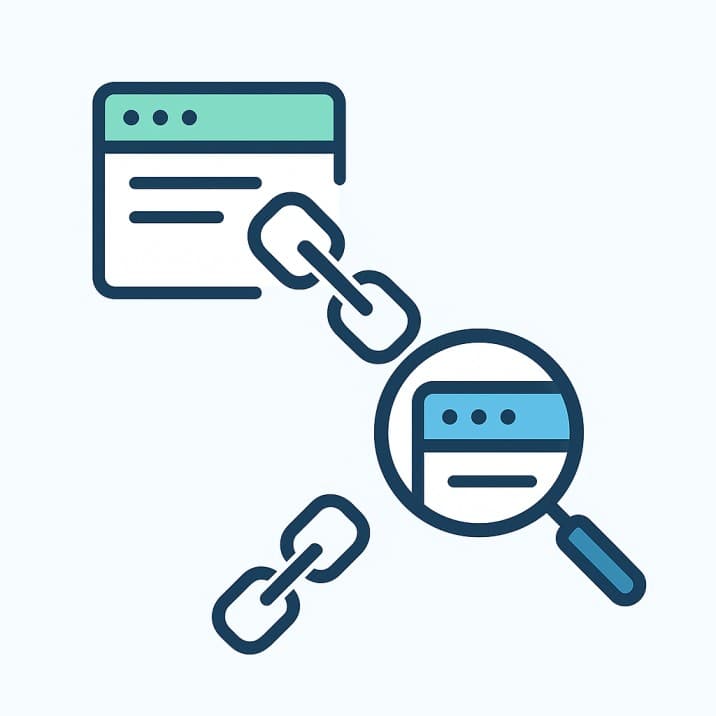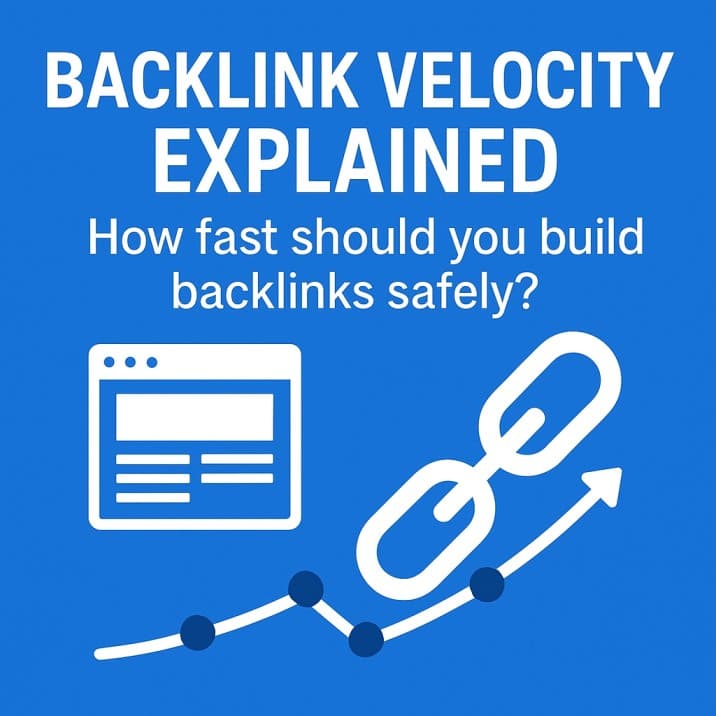
Link gap analysis: how to find missing backlinks your competitors have?
Link gap analysis helps website owners and SEO professionals find new ways to improve their search rankings. Many websites struggle to get noticed because they miss out on important backlinks. Competitor backlink analysis shows which links help other sites rank higher. By understanding these missing backlinks, you can find new link building opportunities for your own website.
Website owners, SEO analysts, and digital marketers can all benefit from learning about link gap analysis. The process is simple and does not require advanced technical skills. Anyone who wants to grow their website’s authority and visibility can use this guide. You will learn how to find missing backlinks, compare your site with competitors, and use the right tools for the job.
What is Link Gap Analysis?
Link gap analysis is a method used to compare your website’s backlinks with those of your competitors. The goal is to find backlinks that your competitors have, but your website does not. These missing backlinks often come from trusted sources and can help improve your search engine rankings.
Backlink gap analysis fits into a larger SEO strategy. It helps you discover new backlink opportunities that you might not find on your own. When you close the link gap, your website can gain more authority and trust in the eyes of search engines.
Missing backlinks can make a big difference in your site’s performance. If your competitors have links from high-quality websites, they may rank higher for important keywords. By identifying and targeting these backlink opportunities, you can boost your own rankings and attract more visitors.
Why Analyzing Competitor Backlinks Matters?
Backlinks play a key role in how search engines rank websites. When a trusted website links to your site, it signals to search engines that your content is valuable. Competitor backlink analysis helps you see which websites are already linking to others in your industry. These links often come from sources that are open to sharing useful content.
Finding backlink opportunities through competitor research can give your website an advantage. If you notice that several competitors have links from the same domain, it shows that the source is relevant to your niche. Reaching out to these domains can help you earn similar backlinks and improve your own link profile.
Many successful websites use backlink gap analysis as part of their SEO strategy. For example, a small business might find that a popular blog links to several competitors but not to them. By reaching out and offering helpful content, the business can earn a new backlink and increase its authority.
Analyzing competitor backlinks is not just about copying others. It is about finding high-quality, relevant links that can help your website grow. This approach leads to better search rankings and more organic traffic over time.
Step-by-Step Guide to Finding Missing Backlinks
1. Collecting Your Backlink Data
Start by gathering a list of all the backlinks pointing to your website. Use a backlink checker tool like Ahrefs, SEMrush, or Moz. Enter your website’s URL and export the list of referring domains. Save this data in a spreadsheet for easy comparison later. Make sure to include important details such as the linking domain, the page where the link appears, and the type of link.
2. Collecting Competitors’ Backlink Data
Repeat the process for each competitor on your list. Enter their URLs into the backlink analysis tool and export their backlink profiles. Keep each competitor’s data in a separate sheet or file. This step helps you see which domains are linking to your competitors but not to your own site.
3. Comparing Link Profiles (Link Intersect Analysis)
Use the link intersect feature in your chosen tool to compare your backlink profile with those of your competitors. The tool will show you a list of domains that link to your competitors but not to you. Focus on domains that link to more than one competitor, as these are often more open to linking to similar websites.
4. Analyzing the Quality and Relevance of Missing Backlinks
Not all backlinks are equal. Check the authority and relevance of each missing backlink. Look for domains with high domain authority and content related to your industry. Avoid low-quality or spammy sites. Prioritize backlink opportunities that can bring real value to your website and help improve your search rankings.
Turning Link Gaps into Link Building Opportunities
Once you have a list of missing backlinks, focus on turning these gaps into real link building opportunities. Start by researching the websites that link to your competitors. Look for contact information or submission guidelines on their pages. Make sure your content matches the topics or interests of these sites.
Create a personalized outreach message for each website. Mention the specific content they linked to on your competitor’s site. Explain how your content offers extra value or a fresh perspective. Keep your message short and clear. Website owners are more likely to respond to requests that show genuine interest.
Use content marketing to attract backlinks. Update your existing pages or create new resources that answer common questions in your industry. Share your content on social media and in relevant online communities. Digital PR can also help by promoting your content to journalists and bloggers who cover your niche.
Building relationships with referring domains takes time. Stay polite and follow up if you do not get a response. Over time, these efforts can help you earn high-quality backlinks and close the link gap with your competitors.
Common Mistakes to Avoid in Link Gap Analysis
Avoiding common mistakes can help you get better results from your link gap analysis and improve your link building strategy.
- Focusing only on the number of backlinks: Quality matters more than quantity. A few links from trusted, relevant sites help your rankings more than many low-quality links.
- Ignoring the relevance of linking domains: Backlinks from unrelated websites add little value. Always check if the linking site covers topics related to your industry.
- Forgetting to check the type of backlinks: Dofollow links pass authority, while nofollow links do not. Focus on dofollow links for better results.
- Not tracking your progress: Without monitoring, you cannot see which strategies work. Keep records of new backlinks and changes in search rankings to improve your approach.
Measuring Success and Iterating Your Strategy
Tracking your progress helps you understand if your link gap analysis and link building efforts are working. Use clear metrics to measure the impact of new backlinks on your website’s performance.
- Monitor new backlinks acquired: Keep a record of each new backlink you gain from your outreach efforts. Note the source and quality of each link.
- Check changes in domain authority: Use tools like Moz or Ahrefs to see if your website’s authority score improves over time.
- Track organic search rankings: Watch for changes in your keyword rankings after gaining new backlinks. Higher rankings often mean your strategy is working.
- Measure organic traffic growth: Use Google Analytics to see if your website is getting more visitors from search engines.
Expert Tips and Best Practices
Following expert advice can make your link gap analysis more effective and help you build stronger backlinks.
- Focus on building relationships: Connect with website owners and editors in your industry. Building trust can lead to more backlink opportunities over time.
- Create valuable and unique content: High-quality content attracts more backlinks. Offer insights, data, or resources that others want to share.
- Stay updated with SEO trends: Search engine algorithms change often. Keep learning about new link building strategies and updates from trusted SEO sources.
- Use a mix of link building tactics: Combine outreach, content marketing, and digital PR to find more backlink opportunities. Relying on one method can limit your results.
- Avoid black-hat techniques: Do not buy low quality backlinks or use spammy tactics. Focus on ethical, white-hat link building for long-term success.
Conclusion
Link gap analysis gives you a clear path to find new backlink opportunities and improve your website’s authority. By comparing your backlink profile with your competitors, you can discover trusted domains that are open to linking to sites in your industry. Using the right tools and following a step-by-step process makes it easier to close the gap and boost your search rankings.
Start by identifying your main competitors and gathering backlink data. Focus on quality and relevance when choosing which backlinks to pursue. Use outreach and content marketing to earn new links, and always track your progress to see what works best.
Frequently Asked Questions
What is the difference between link gap analysis and a backlink audit?
Link gap analysis compares your backlinks with your competitors to find missing opportunities. A backlink audit checks the quality and health of your own backlinks.
How often should I perform a link gap analysis?
It is a good idea to do link gap analysis every few months. This helps you find new backlink opportunities and keep up with changes in your industry.
Can I do link gap analysis without paid tools?
Yes, you can use free tools like Google Search Console or limited versions of backlink checkers. Paid tools give more detailed data, but free options are helpful for small websites.
What if my competitors have spammy backlinks?
Focus only on high-quality and relevant backlinks. Avoid trying to get links from spammy or low-quality sites, as these can harm your website.
How long does it take to see results from new backlinks?
It can take a few weeks to a few months to see changes in your search rankings after getting new backlinks. Search engines need time to find and value new links.








